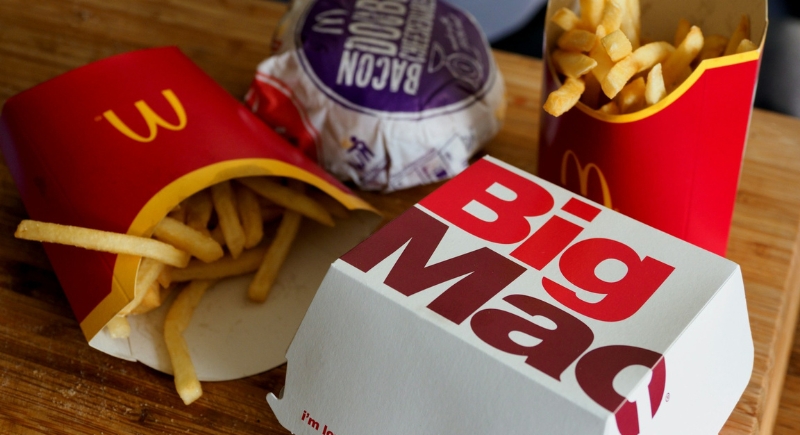Are Weight Loss Drugs Cutting Into McDonald’s Customer Base?
Prescriptions for weight loss drugs have surged past 10 million in the U.S., and analysts are already warning that fewer cravings could mean fewer trips through the drive-thru. McDonald’s, which serves nearly 25 million customers a day in America, is especially exposed. The company is facing medications that change how people experience hunger. The real question now is how much of its business disappears if appetite itself is no longer driving sales.
Why Appetite Suppression Matters for Fast Food

Image via Unsplash/Brett Jordan
In June, analysts at Redburn Atlantic downgraded McDonald’s stock from “Buy” to “Sell,” which triggered a nearly 2 percent drop in share value. The move was based on the rise of GLP-1 weight loss drugs like Ozempic and Wegovy.
These medications, originally developed for diabetes, reduce hunger by affecting how the brain and gut communicate. The result is that people eat and snack less. For a business model that depends on consistent, repeat visits, such a change in consumer behavior could be significant.
Redburn estimates McDonald’s could see 28 million fewer visits in the U.S. each year, which translates to about $482 million less in revenue.
Analysts suggest the drug’s effect cuts across the board. Smaller appetites mean less restaurant spending overall, whether on fries, salads, or anything in between. That’s why the conversation isn’t limited to one chain. GLP-1s are seen as “demand disruptors” for the wider food industry.
Pricing Fatigue and Shifting Habits
Weight loss medications aren’t the only headwind McDonald’s faces. Over the past few years, the price gap between eating at home and ordering fast food has narrowed dramatically. The cheapest fallback for a busy night now costs almost the same as cooking a meal from scratch. Analysts call this “pricing fatigue,” and it’s pushing some regulars to rethink their routines.
This shift follows two straight quarters of declining U.S. same-store sales. Higher menu prices, stretched household budgets, and changing perceptions of value are making drive-through visits less automatic. The potential appetite-suppressing effect of GLP-1 drugs only adds another layer to the challenge.
Different Customer Groups, Different Timelines

Image via Unsplash/Krišjānis Kazaks
Some in the industry argue that the immediate impact of weight loss drugs will be limited. Right now, GLP-1 medications are expensive, often exceeding $1,000 per month without insurance coverage. Analysts point out that McDonald’s core customer base skews toward lower-income households, who are less likely to afford these treatments today.
But this perspective comes with a warning: prices for medications tend to fall over time, especially as competition and generics enter the market. If that happens, the overlap between GLP-1 users and McDonald’s regulars could grow quickly. The slow-moving trend in 2025 could accelerate into a much bigger shift later in the decade.
Where This Could Be Headed

Image via Unsplash/Alexander Grey
For now, GLP-1 drugs are a notable factor in analyst forecasts, but not the single deciding element in McDonald’s performance. Pricing strategy, inflation, and broader economic conditions remain immediate concerns. The potential for weight loss drugs to reshape the food service industry is still in its early stages, but the scale of the projections—and the size of McDonald’s customer base—means the stakes are high.